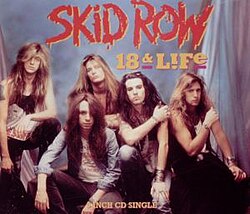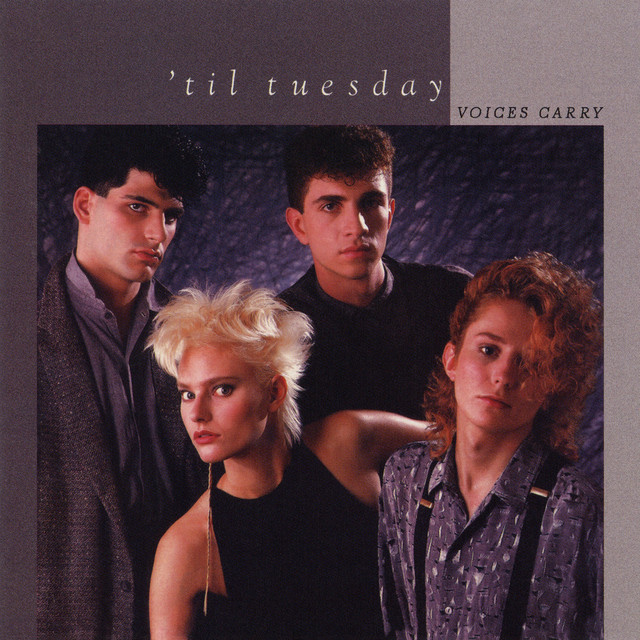 In 1989, Nine Inch Nails released “Head Like a Hole,” a song that would become both a defining anthem of industrial rock and a cultural statement of defiance. As the lead single from Trent Reznor’s debut album Pretty Hate Machine, the track captured the raw aggression, mechanical intensity, and dark emotional energy that would come to characterize his career. Combining pounding electronic beats, distorted guitars, and Reznor’s visceral vocal delivery, “Head Like a Hole” encapsulates the tension between control and rebellion, authority and autonomy, and desire and rage. Its lyrics are a blistering critique of power, greed, and exploitation, yet the song’s infectious rhythm and memorable hooks ensured its crossover appeal, reaching audiences far beyond the industrial underground. From the opening sequence of ominous synths and programmed percussion to the explosive chorus, the track blends aggression with accessibility, creating a musical experience that is both cathartic and exhilarating. Beyond its sonic impact, “Head Like a Hole” embodies the ethos of late-80s industrial music—a fusion of technology, emotion, and social critique—and solidified Nine Inch Nails as a transformative force in modern rock. Its influence reverberates decades later, inspiring countless artists and cementing the song as a cornerstone of alternative music history.
In 1989, Nine Inch Nails released “Head Like a Hole,” a song that would become both a defining anthem of industrial rock and a cultural statement of defiance. As the lead single from Trent Reznor’s debut album Pretty Hate Machine, the track captured the raw aggression, mechanical intensity, and dark emotional energy that would come to characterize his career. Combining pounding electronic beats, distorted guitars, and Reznor’s visceral vocal delivery, “Head Like a Hole” encapsulates the tension between control and rebellion, authority and autonomy, and desire and rage. Its lyrics are a blistering critique of power, greed, and exploitation, yet the song’s infectious rhythm and memorable hooks ensured its crossover appeal, reaching audiences far beyond the industrial underground. From the opening sequence of ominous synths and programmed percussion to the explosive chorus, the track blends aggression with accessibility, creating a musical experience that is both cathartic and exhilarating. Beyond its sonic impact, “Head Like a Hole” embodies the ethos of late-80s industrial music—a fusion of technology, emotion, and social critique—and solidified Nine Inch Nails as a transformative force in modern rock. Its influence reverberates decades later, inspiring countless artists and cementing the song as a cornerstone of alternative music history.
Trent Reznor and the Birth of Nine Inch Nails
Trent Reznor emerged in the late 1980s as a singular visionary, blending elements of electronic music, punk, industrial, and rock into a cohesive and emotionally potent sound. Unlike traditional rock bands, Nine Inch Nails was essentially Reznor’s solo project, with him writing, performing, and producing nearly every element of the early recordings. This level of creative control allowed Reznor to craft a sound that was both intensely personal and broadly resonant.
Head Like a Hole exemplifies Reznor’s approach: it is aggressive yet meticulously constructed, blending programmed drum machines with distorted guitars, layered synth textures, and strategic samples. The song’s production emphasizes both mechanical precision and emotional intensity, creating a sonic environment that mirrors its lyrical themes of control, resistance, and rage. Reznor’s vocals—alternating between biting snarl and anguished wail—heighten the song’s emotional impact, giving listeners a direct line into the psyche of the artist and the song’s thematic core.
Origins and Composition
The genesis of “Head Like a Hole” lies in Reznor’s fascination with the industrial music movement and the emerging possibilities of digital production. Influenced by bands such as Ministry, Skinny Puppy, and early Depeche Mode, Reznor sought to combine electronic textures with rock intensity, creating a sound that was both futuristic and aggressive.
Musically, the song is built around a driving, syncopated electronic rhythm, punctuated by distorted guitars and dark synth lines. The verses are tense and restrained, establishing a sense of mechanical oppression, while the chorus explodes into fury, with Reznor’s voice and instrumentation colliding in a cathartic release. The iconic line:
“Head like a hole
Black as your soul
I’ll let you in
Hate you again”
captures the essence of the track, combining biting social critique with raw emotional expression. The lyrics explore themes of greed, corruption, and the struggle for autonomy, presenting a confrontational stance against societal and personal control.
Musical Structure and Arrangement
Head Like a Hole is structured around tension and release, a hallmark of Reznor’s early industrial compositions. The song opens with ominous synth textures, layered with metallic percussion that immediately sets a dark, mechanical tone. As the verse progresses, the rhythm tightens and the synths shift, creating a sense of mounting anxiety and urgency.
The pre-chorus introduces distorted guitar stabs and additional percussion layers, intensifying the sonic pressure. By the time the chorus arrives, the song erupts with full force: pounding drums, roaring guitars, and Reznor’s impassioned vocals combine to create a visceral, almost overwhelming sonic assault. This dynamic interplay between restraint and release mirrors the song’s lyrical themes, reinforcing the sense of rebellion against oppression and control.
The production is dense and layered, yet remarkably precise. Each element—the drums, synths, guitars, and vocals—is carefully balanced, ensuring that the aggression never descends into chaos. Instead, the track maintains a hypnotic momentum, drawing listeners into its relentless energy while simultaneously delivering a powerful emotional impact.
Lyrical Themes and Social Critique
Lyrically, “Head Like a Hole” is a scathing critique of power, greed, and manipulation. The repeated references to “black as your soul” and the imagery of control and domination convey a sense of confrontation, challenging figures or systems that exploit and oppress. Reznor’s lyrics are both specific and universal—they can be read as commentary on corporate greed, personal betrayal, or broader societal corruption.
The song’s rebellious tone is amplified by its delivery. Reznor’s vocals oscillate between cool detachment and fiery aggression, embodying both defiance and anguish. This vocal approach allows listeners to engage with the song on multiple levels, whether as a personal catharsis, a call to action, or an exploration of emotional intensity.
The universality of the song’s themes contributes to its enduring appeal. The frustration, anger, and desire for autonomy expressed in the lyrics resonate with listeners across generations, making “Head Like a Hole” not only a product of its time but a timeless anthem of resistance.
Production Techniques and Sonic Innovation
Reznor’s production on “Head Like a Hole” exemplifies the possibilities of industrial music in the late 1980s. The track combines analog synthesizers, drum machines, and traditional rock instrumentation, creating a sound that is simultaneously electronic, organic, and aggressive.
Reznor employed layering, sampling, and careful manipulation of effects to create a dense, immersive sonic landscape. The interplay between electronic and acoustic elements—the mechanical precision of programmed drums and the visceral impact of distorted guitars—creates a tension that mirrors the song’s lyrical content. The use of reverb, delay, and modulation effects adds depth and spatial complexity, making the track feel simultaneously immediate and expansive.
The production also emphasizes rhythm and repetition, with the relentless beat serving as both a musical anchor and a vehicle for emotional intensity. This focus on rhythmic propulsion is a defining characteristic of industrial music, and Reznor’s mastery of the technique helped establish Nine Inch Nails as a pioneering force in the genre.
Cultural Reception and Impact
Upon its release, “Head Like a Hole” quickly became a defining track of industrial rock, earning critical acclaim and widespread recognition. Its aggressive energy, compelling hook, and emotional intensity resonated with fans of alternative music, while its accessible song structure allowed it to reach a broader audience.
The song’s influence extends beyond its immediate commercial success. It helped legitimize industrial rock as a mainstream genre, paving the way for artists such as Marilyn Manson, KMFDM, and Ministry to achieve greater visibility. Its combination of electronic innovation, rock intensity, and emotional authenticity set a template for subsequent alternative and industrial acts, demonstrating how music could be both confrontational and commercially viable.
In addition to its musical impact, “Head Like a Hole” became a cultural touchstone, appearing in films, television, and video games. Its themes of rebellion, autonomy, and resistance to control have continued to resonate, making the song a symbol of defiance and empowerment for successive generations of listeners.
Live Performances and Enduring Legacy
Nine Inch Nails’ live performances of “Head Like a Hole” amplify the track’s intensity and theatricality. Reznor and his band often incorporate dramatic lighting, video projections, and physical performance elements to enhance the song’s emotional and sensory impact. The live renditions emphasize the song’s rhythmic drive, aggressive instrumentation, and cathartic release, allowing audiences to experience its full intensity in real time.
Over the decades, the song has been remixed, covered, and celebrated in numerous contexts, further cementing its status as a seminal track in alternative music. Its enduring influence is evident in both the continued popularity of Nine Inch Nails’ catalog and the broader adoption of industrial techniques and aesthetics in popular music.
Why “Head Like a Hole” Matters Today
Head Like a Hole endures because it captures universal emotions—anger, frustration, rebellion—through a medium that is both innovative and viscerally compelling. Its combination of electronic and acoustic instrumentation, precise production, and emotionally charged performance ensures that it remains relevant and powerful decades after its release.
The song’s themes of autonomy, resistance, and critique of oppressive systems continue to resonate in contemporary culture. Whether interpreted as personal, political, or social commentary, “Head Like a Hole” provides a potent example of music’s ability to articulate and channel intense emotion, creating both catharsis and connection.
Final Reflections
Nine Inch Nails’ “Head Like a Hole” is more than a single from 1989; it is an anthem of industrial rebellion, emotional intensity, and sonic innovation. Its driving rhythm, aggressive instrumentation, and powerful vocal performance establish it as a cornerstone of alternative music, while its lyrical critique of power and control ensures its enduring relevance.
Trent Reznor’s vision and execution demonstrate how a single song can encapsulate the ethos of an era while remaining timeless in its emotional resonance. Head Like a Hole remains a testament to the power of music to provoke, challenge, and energize, combining visceral impact with artistic sophistication in a way that few tracks have achieved. Its legacy is enduring, influencing generations of musicians and listeners while continuing to embody the spirit of rebellion, defiance, and emotional truth.


